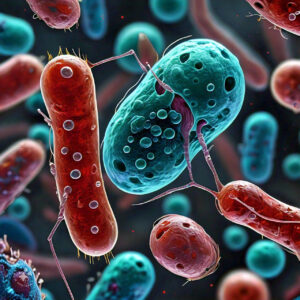Smarter Resources for
Simplified Biology
Learning
Revolutionize your biology prep with tools that make studying simpler, faster, and more effective, so you can achieve the grades you’ve always dreamed of.
Get Started
Audio Overview
Animated Video
Flascards, Questions, MCQs
2,402+
Study Notes
2,823+
Questions
2,321+
MCQ
1000+
Flashcards
Find a solution
Ask a question
You have homework questions, and we’ve got the answers! Submit your question now for instant, step-by-step solutions!*
Quiz Leaderboard
1st
Meenakshi
Score: 100%
Questions: 20
2nd
Debabrata
Score: 100%
Questions: 20
3rd
BandzzzzTheONESIMELANE
Score: 95%
Questions: 20
4th
Sourav
Score: 90%
Questions: 20
5th
Nischal
Score: 90%
Questions: 10
6th
Priyanka
Score: 90%
Questions: 10
7th
OTLOTLENG
Score: 70%
Questions: 10
8th
Martin
Score: 65%
Questions: 20
9th
Meenakshi
Score: 60%
Questions: 50
10th
Meenakshi
Score: 60%
Questions: 50
Audio Book
Learn Biology On the Go: Audio Breakdowns of Complex Topics and Cutting-Edge Studies.
Explore Notes Topic Wise
Explore Microbiology Notes Topics Wise
Explore Zoology Notes Topics Wise
Explore Botany Notes Topics Wise
Exam Categories
Or pick from our most popular courses - What are you studying?
All the courses you need in one place
From Bsc to Msc topics, biologynotesonline.com supports your semester preparation.
Biology Notes Topics
Uncover the Microscopic Marvels – Dive into the World of Tiny Titans!
Microbiology Notes
Botany Notes
Zoology Notes
Biology Practicals
Others
Microorganisms
- Agricultural Microbiology 12 posts
- Bacteriology 104 posts
- Basic Microbiology 95 posts
- Biochemistry 20 posts
- Bioinformatics 25 posts
- Biotechnology 13 posts
- Cell Biology 133 posts
- Disease 7 posts
- Ecology 33 posts
- Environmental Microbiology 4 posts
- Epidemiology 1 post
- Food Microbiology 58 posts
- Genetics 100 posts
- Immunology 108 posts
- Industrial microbiology 24 posts
- Intellectual Property Rights 9 posts
- Medical Microbiology 37 posts
- Microbiologists 8 posts
- Microscope 28 posts
- Molecular biology 86 posts
- Mycology 49 posts
- Parasitology 11 posts
- Phycology 22 posts
- Prions 2 posts
- Protozoa 16 posts
- Virology 67 posts
- Angiosperms 32 posts
- Archegoniate 12 posts
- Biodiversity 1 post
- Economic Botany 15 posts
- Ethnobotany 5 posts
- Horticultural 10 posts
- Natural Resource Management 3 posts
- Plant Anatomy and Embryology 19 posts
- Plant Breeding 16 posts
- Plant Ecology and Taxonomy 15 posts
- Plant Physiology and Metabolism 19 posts
- Animal Behaviour 1 post
- Basic Zoology 5 posts
- Biology of Insecta 15 posts
- Chordates 27 posts
- Developmental Biology 22 posts
- Endocrinology 17 posts
- Ethology 6 posts
- Evolutionary Biology 21 posts
- Fish and fisheries 25 posts
- Human Anatomy 13 posts
- Neuroscience 17 posts
- Non-chordates 20 posts
- Pest Management 5 posts
- Physiology 52 posts
- Protista 15 posts
- Reproductive Biology 5 posts
- Research Methodology 8 posts
- Vertebrata 13 posts
- Biochemical Test 96 posts
- Botany Practicals 2 posts
- Culture Media 79 posts
- Cytopathology 1 post
- Hematology 7 posts
- Immunology Practical 19 posts
- Instruments 150 posts
- Laboratory Techniques 5 posts
- Laboratory Tests 16 posts
- Microbiology Techniques 25 posts
- Protocols 18 posts
- Solution preparation 21 posts
- Staining 46 posts
- Under Microscope 26 posts
- Differences 183 notes
- Intellectual Property Rights 9 notes
- Question Papers 6 notes
- Recommended Books 59 notes
- Research Methodology 8 notes
- Syllabus 12 notes
- Top in Biology 13 notes
- Universities and Colleges 1 post
- Worksheet 2 notes
- Bacteriology 104 posts
- Mycology 49 posts
- Parasitology 11 posts
- Phycology 22 posts
- Prions 2 posts
- Protozoa 16 posts
- Virology 67 posts
Latest Notes
Questions and Answers
Check Questions and Answers
-
what is the name of the kinetic intermediate in protein folding where secondary structure elements have formed their regular H-bonding patterns and there has been collapse to separate most nonpolar side chains into the protein interior and most hydrophilic side chains to the protein exterior, but the side chain packing has not yet been optimized to achieve a tightly packed protein interior with a crystalline density?
<p class="" data-start="2" data-end="83"><span class="relative -mx-px my-[-0.2rem] rounded px-px py-[0.2rem]
-
1. If you did “overload” your Ni+2 Agarose column with a GCE sample that contained too much rGFP, would you expect to see a band in the W2 lane of the Western Blot? If so what is it’s MW? Would you expect to see a band in the E2 lane? If so what is it’s MW? 2. Chromatography columns have a limited protein binding capacity. During the Ni2+ agarose column lab, you shouldnt have overloaded the column. If you did the W2 fraction may have fluoresced slightly. If you see a band in the Western Blot W2 lane, what does this data say about the physical protein structure of rGFP in that lane? Give a possible MW for this band based upon the data.
<p class="" data-start="2" data-end="83"><span class="relative -mx-px my-[-0.2rem] rounded px-px py-[0.2rem]
-
In an erythrocyte undergoing glycolysis, what would be the effect of a sudden increase in the concentration of a. ATP? b. AMP? c. fructose-1,6-bisphosphate? d. fructose-2,6-bisphosphate? e. citrate? f. glucose-6-phosphate?
<ul> <li class="" data-start="0" data-end="344"> <p class="" data-start="2" data-end="83"><span class="relative -mx-px
-
1. Briefly explain why you should not heat organic solvents over a Bunsen burner flame. 2. Indicate a procedure to solve the following recrystallization problems. (a) oiling out (b) lack of crystal formation (c) presence of colored impurities 3. Compound A, a white crystalline solid with a melting point of 75°C, has the solubility profile shown in the following table. Which of the solvents listed would be a good recrystallizing solvent for Compound A? Briefly explain. Compound A — solubility profile solvent solvent boiling pt. solubility at 25°C solubility at boiling point water 100. c insol. sol. methanol 65°C insol. sol. acetone 56°C sol. sol. diethyl ether 35°C sol. sol. 4. A student purified a 500. mg sample of phthalic acid by recrystallization from water. The published solubility of phthalic acid in 100. mL of water is 0.54 g at 14°C and 18 g at 100.°C. You must show your calculations for the questions below. (a) What is the smallest volume of boiling water the student could use to dissolve 500. mg of phthalic acid? (b) Dissolution of phthalic acid in boiling water produced a clear solution. The student allowed the solution to cool, then put the solution in an ice bath. Crystals formed, and the student isolated 380 mg of phthalic acid. Calculate the percent recovery of phthalic acid in this experiment.
<ul> <li class="" data-start="0" data-end="361"> <p class="" data-start="2" data-end="361">Organic solvents should
-
which cells resemble basophils and are found in connective tissue close to small blood vessels
<p class="" data-start="2" data-end="109">Mast cells are tissue-resident immune cells that
-
outline 2 properties of plasma membrane
<ul> <li class="" data-start="0" data-end="542"> <p class="" data-start="2" data-end="30"><strong data-start="2" data-end="28">Selective
-
rolling circle model of dna replication
<ul> <li class="" data-start="0" data-end="245"> <p class="" data-start="2" data-end="33"><strong data-start="2" data-end="31">Initiation
- All Questions
See what others are saying
124















 People found this helpful
People found this helpful
12

 People found this not helpful
People found this not helpful
❝
Very detailed, I appreciate the combination of in-depth descriptions of the processes and interactions with other compounds and the implications of adequate amounts vs deficiencies. Mentioning affected organs and related conditions help connect the complex details to the bigger picture, which helps me make sense of it and retain information more easily. Afterward, the tables and bullet points are really great for summarizing info. Thanks also for including vitamins plus additional essential compounds. Comprehensive and very well organized.
❝
TONS of useful information laid out in an order that makes sense, is easily readable, includes images, and is referenced



